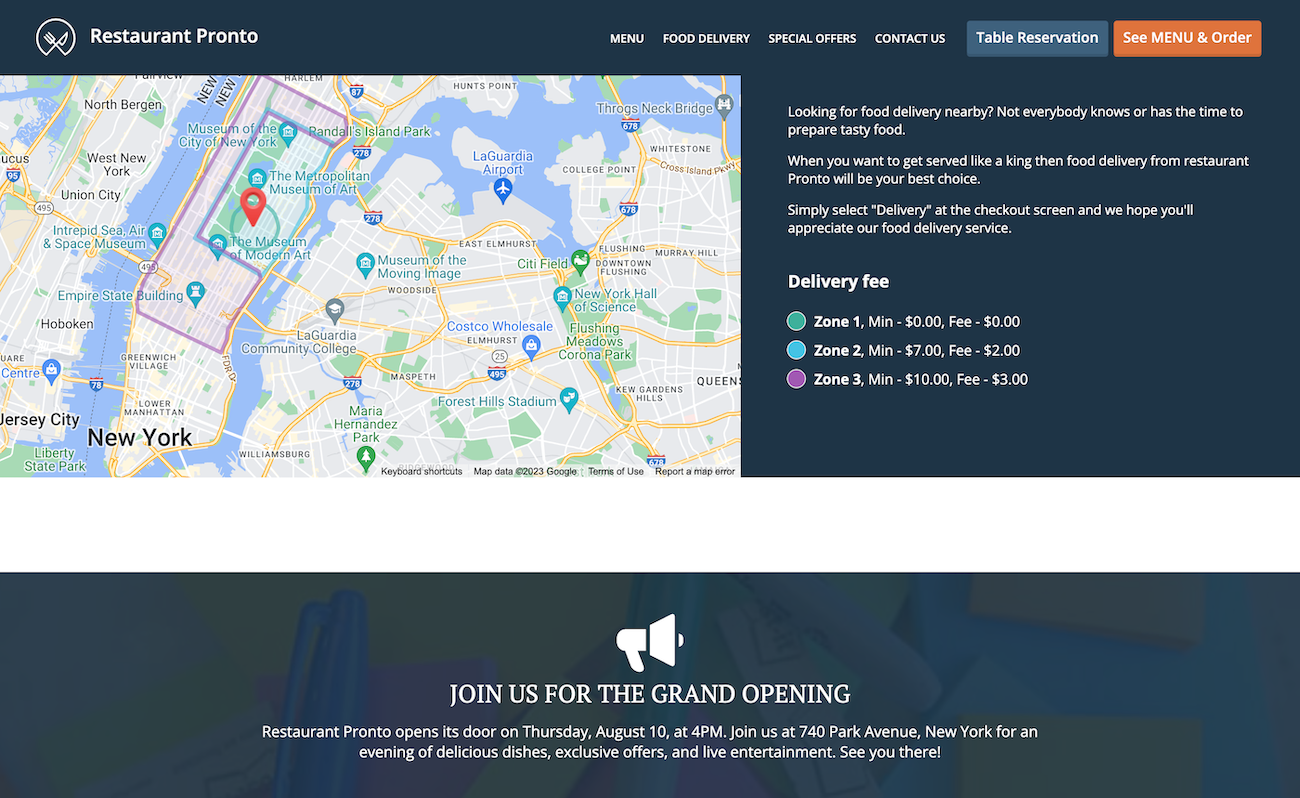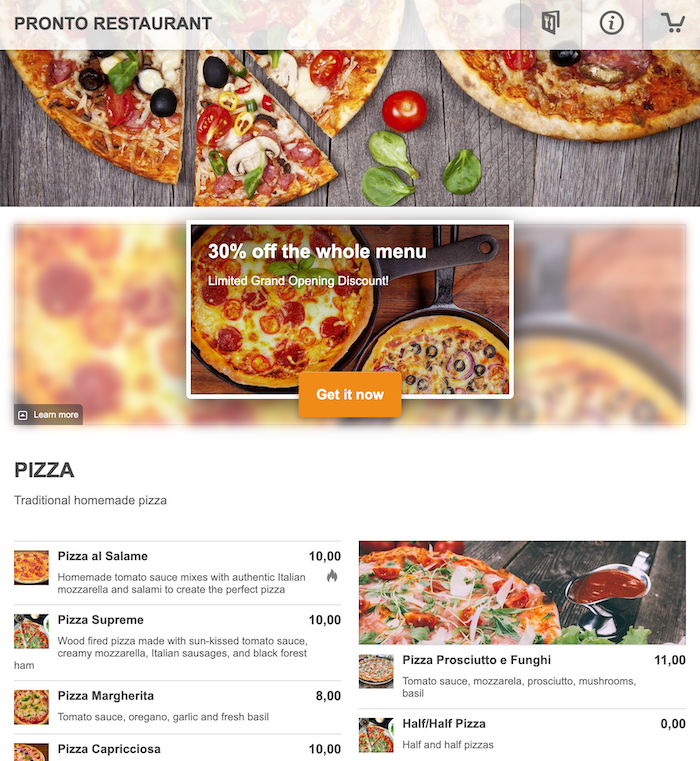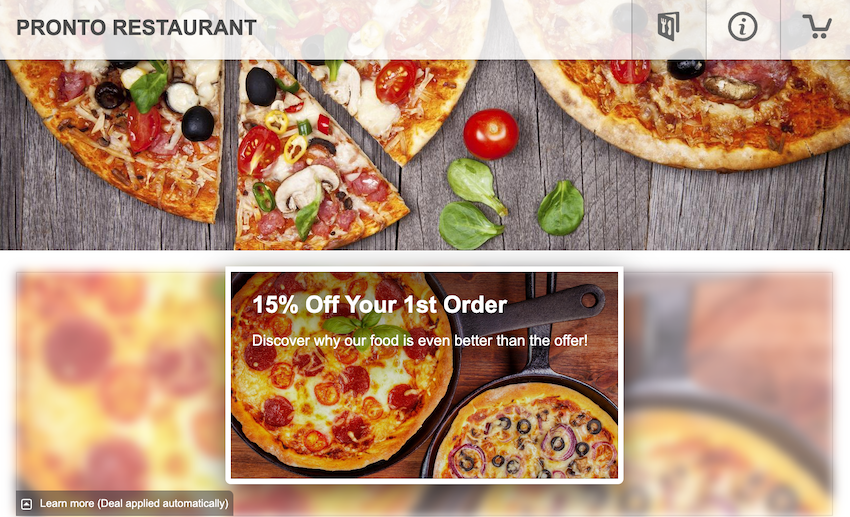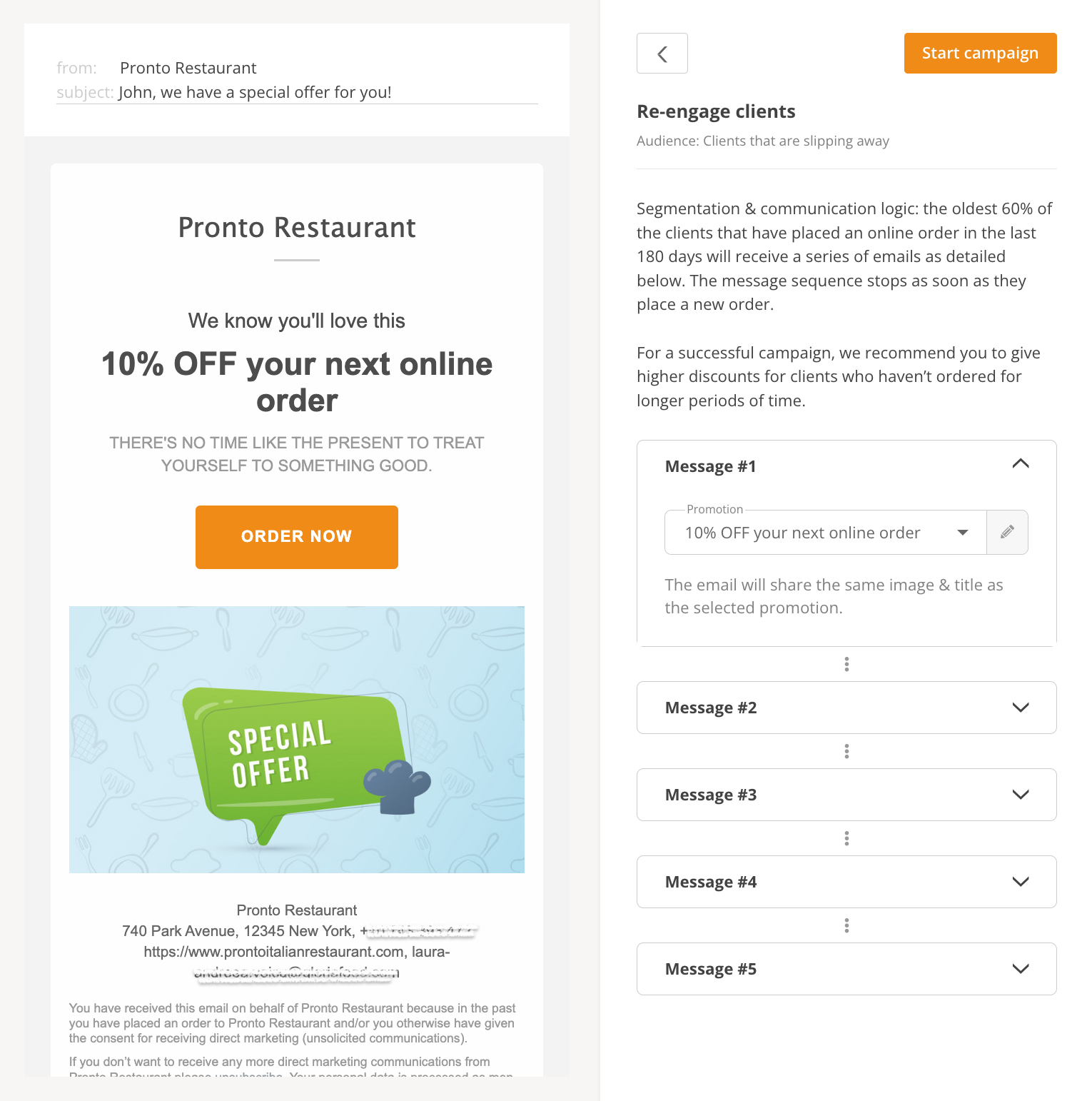- 1.Step 1: Set your restaurant marketing objectives and goals
- 2.Step 2: Perform a market analysis
- 3.Step 3: Identify your selling points
- 4.Step 4: Create a marketing budget plan
- 5.Step 5: Use your website to promote your restaurant online
- 6.Step 6: Create a restaurant social media marketing plan
- 7.Step 7: Offer grand opening discounts and promotions
- 8.Step 8: Use email marketing to encourage repeat orders
- 9.Step 9: Focus on obtaining positive customer reviews
Are you planning to open a new restaurant? Then you need a bulletproof marketing plan that will help you spread the word and guide you through your first days and months as a new restaurateur.
Below, we have prepared a 7-step marketing plan for a new restaurant, from goals and objectives to social media and reviews.
Why You Need a Marketing Plan for Your Restaurant Opening
The success of your restaurant’s grand opening will set the tone for your popularity and long-term profitability. This should not be treated lightly.
As such, you need a well-thought-out marketing plan that ensures:
- Nothing slips through the cracks: It’s easy to get overwhelmed when you’re planning a restaurant opening. Put pen to paper (or fingers to keyboard) well in advance to ensure you don’t wake up on the big day realizing you forgot something major.
- You control how customers see you: Don’t leave it up to chance. Think about your brand identity and what you want your restaurant to be when creating a marketing plan for a new restaurant. Your decisions here will impact how you present yourself in your email, text blast, and social media campaigns, along with all of your other marketing initiatives.
- Media and customers alike are excited to visit: How and where you promote your new restaurant dictates who will come to your grand opening. Invite local media and influencers and tempt customers with discounts and surprises on the day.
Read more: Restaurant Influencer Marketing Guide: Tips for a Successful Collaboration
9-Step Marketing Plan for a New Restaurant
The promotion strategy for your restaurant opening should start long before you open your doors to the public. Let’s look at the 7 key aspects of your new restaurant marketing plan.
Step 1: Set your restaurant marketing objectives and goals
The most effective restaurant marketing plan is based on achievable and quantifiable goals that will keep you motivated and on track.
When setting restaurant goals, think SMART: specific, measurable, achievable, relevant, and timely.
Here are some examples of SMART goals for restaurants planning an opening:
- Social media awareness and engagement: Get 100 page likes/follows, 50 post likes, 20 comments, and 10 reshares on all social media platforms.
- Website visits and conversions: Get 100 website visits and 25 online orders on your website. Use our free online ordering system to accept orders and easily track visits, sales, and other restaurant analytics in the reporting module.
- Table reservations: Get 20 table reservations for the grand opening (the goal will vary depending on your restaurant’s capacity). Use our free table reservation system to accept bookings directly on your website.
These are short-term marketing goals to help you kickstart your restaurant’s journey. But you should also think long-term when creating your marketing plan. Here are some long-term goals for a restaurant at the beginning of the road:
- Get quality customer feedback
- Grow your social media following
- Increase customer retention
- Increase website traffic for online ordering
- Boost the average check/order value
Step 2: Perform a market analysis
To create a successful marketing plan for a restaurant opening, you need to know who you are competing against and how you can outshine them. Therefore, we recommend you identify five of your local direct competitors and perform a SWOT analysis:
- Strengths: go over your competitors’ websites, social media profiles and even pay them a visit to see what their best-selling dishes are, what the atmosphere is, and how satisfied the customers are. You may identify some effective marketing techniques you can copy, such as offering promotions;
- Weaknesses: if you read through their online reviews, what do customers complain most about? Take note and ensure you will offer a better experience at your restaurant;
- Opportunities: look over your competitors’ business with a critical eye to identify their weak points. For example, if they have a large menu that is hard to follow, you can use a small menu, that prizes quality over quantity.
- Threats: are some of your competitors doing something unique that can’t be replicated? What else can you do to sway potential customers in your favor?
Read more: Market Research for Restaurants 101: Guide to Long-Term Success
Step 3: Identify your selling points
Your food won’t be to everyone’s taste and that is alright. The key is to identify your target audience so you can cater your marketing strategies to them. You will need to compile census data and analyze your competitors’ clients to determine your target market’s:
- Demographics: age, gender, location;
- Psychographics: preferred ambiance in a restaurant, social values, going out motivators;
- Behavior: type of food order, restaurant price range, what attracts them to a restaurant.
Read more: Restaurant Target Market: How to Identify It and Why It Is Important for Your Business
By gathering the data about the competitors compiled above and the information about your future clients, you will be able to create a marketing plan for launching a new restaurant with compelling selling points. They could be related to:
- Menu concept: are you using ingredients in a different way? Or are you only using local, seasonal products or imported ones?
- Price: do you plan on offering a lower cost than your competitors?
- Location: do you have a great view? Are you located in the main square? Do you have a big garden?
- Story: are you cooking after your grandma’s recipes? Are you a chef with countless years of experience?
For example, Restaurant Pronto has the following Unique Selling Proposition: “Traditional Italian dishes, made with quality ingredients from Italy, served in a communal style ambiance.”.
Step 4: Create a marketing budget plan
Opening a new restaurant requires a big investment, and you can’t spend your entire budget on marketing. That said, you need to create a marketing budget plan for your restaurant, to see how much you can afford to invest in marketing.
Once you’re aware of your goals and the marketing tools you’d like to use, settle on a marketing budget. Generally, this shouldn’t exceed 6% of your sales.
Once your restaurant has been around for a while, consider using the 70/20/10 marketing budget method. 70% of your budget can go to conventional marketing, 10% to new marketing methods, and the other 20% to tried-and-tested methods that have worked in the past.
Step 5: Use your website to promote your restaurant online
One of the best ways to ensure customers will come across your restaurant online is to have your own website. This works wonders for branding, and it can help you attract more customers and boost sales. Hiring expert web designers will ensure your business reaches more customers.
Read more: 12 Restaurant Branding Ideas to Build a Memorable Presence
For that, you need a website that:
- Is optimized for search engines: for example, your website has to contain relevant local keywords that will help customers find your restaurant when searching for your cuisine in their area. (e.g.: Chinese restaurant in Scranton, Pennsylvania);
- Is responsive: so that customers can easily browse it on any device;
- Makes it easy to place online orders: with a highly visible order button that leads customers to the menu and easy checkout.
Hiring a developer to build a restaurant website can eat up a huge chunk if not all of your marketing budget. Sidestep that expense by generating a sales and SEO-optimized website in no more than 10 minutes by following this step-by-step video tutorial:
You should have your restaurant website up and running before the grand opening, so you have time to get people interested by advertising it on your homepage, like this:
Step 6: Create a restaurant social media marketing plan
Next to your website, social media is one of the most important aspects of any marketing plan for a new restaurant. That’s how you get the word out and engage with your customers.
The first thing you need to remember about social media is that different platforms attract different customers:
- Is your target audience older? Post on Facebook;
- Do you want to attract a younger crowd? Try Instagram and TikTok.
The content should also be different depending on the platform:
- Facebook is better for written content and keeping customers up-to-date;
- Instagram is where you can share mouthwatering photos of your dishes;
- TikTok is where you can take customers behind the scenes in short clips.
The best part about social media is that it’s a free marketing channel. It’s free to create a business account and post. If you want to explore paid social media ads on these platforms, you need to factor that into your marketing budget.
You can also use your marketing budget to work with a digital marketing agency, which can help optimize your online presence, maximizing your reach and engagement potential.
Read more: How to Attract More Customers to Your Restaurant Using Social Media
Step 7: Offer grand opening discounts and promotions
Offering special discounts and irresistible offers is restaurant marketing 101. As a result, it shouldn’t be absent from any marketing plan for a new restaurant.
It is customary to kickstart your restaurant’s journey with attractive deals that will get people through the doors and make them invite their friends and family too. Then, it’s up to you to woo them with your food.
Read more: How to Use Restaurant Promotion Templates Effectively to Boost Sales
To ace marketing for new restaurants, you can encourage customers to place their first online order by offering a first-order discount or free delivery.
Use the Kickstarter module integrated into our online ordering system to create and publish a first-buy promo in seconds. Here’s how:
Step 8: Use email marketing to encourage repeat orders
As we’ve mentioned above, one of the main goals of your new restaurant marketing plan is to increase customer retention.
How are you going to convince customers to keep coming back to your restaurant? One, by serving delicious food. Two, by giving them an incentive they can’t resist, like a discount on their next order.
Our automated email marketing templates enable you to set your desired campaigns (encourage second order, re-engage clients, or cart abandonment), and let them run in the background, on Autopilot.
Customers will receive a series of emails with discounts to remind them why they loved your restaurant in the first place, such as this one:
Learn more about how you can use Autopilot to increase return visits in the video below:
Read more: Restaurant Email Marketing Done Right: 12 Ideas to Woo Customers
Step 9: Focus on obtaining positive customer reviews
For the long-term success of your restaurant, you need satisfied customers to leave stellar reviews online. 94% of US restaurant diners make their decisions based on online reviews.
Encourage reviews from day one by leaving QR codes on the tables at the grand opening. Tell customers they can scan them to leave you a review if they’ve enjoyed their meal.
Build your online reputation by encouraging reviews on multiple platforms, such as:
A good way to build your reputation is to engage in community events and support local causes. Consider restaurant fundraising as a creative way to market a new restaurant.
Don’t forget to reply to all the reviews, particularly the negative ones, to show potential customers that client satisfaction is your utmost priority.
That’s a Wrap
Before opening your doors and enabling online orders, you need to put together a comprehensive marketing plan to help you stay on course and ensure that your launch will be a success. Follow this step-by-step marketing plan for a new restaurant to let customers know you’re opening for business.
You might also like:





